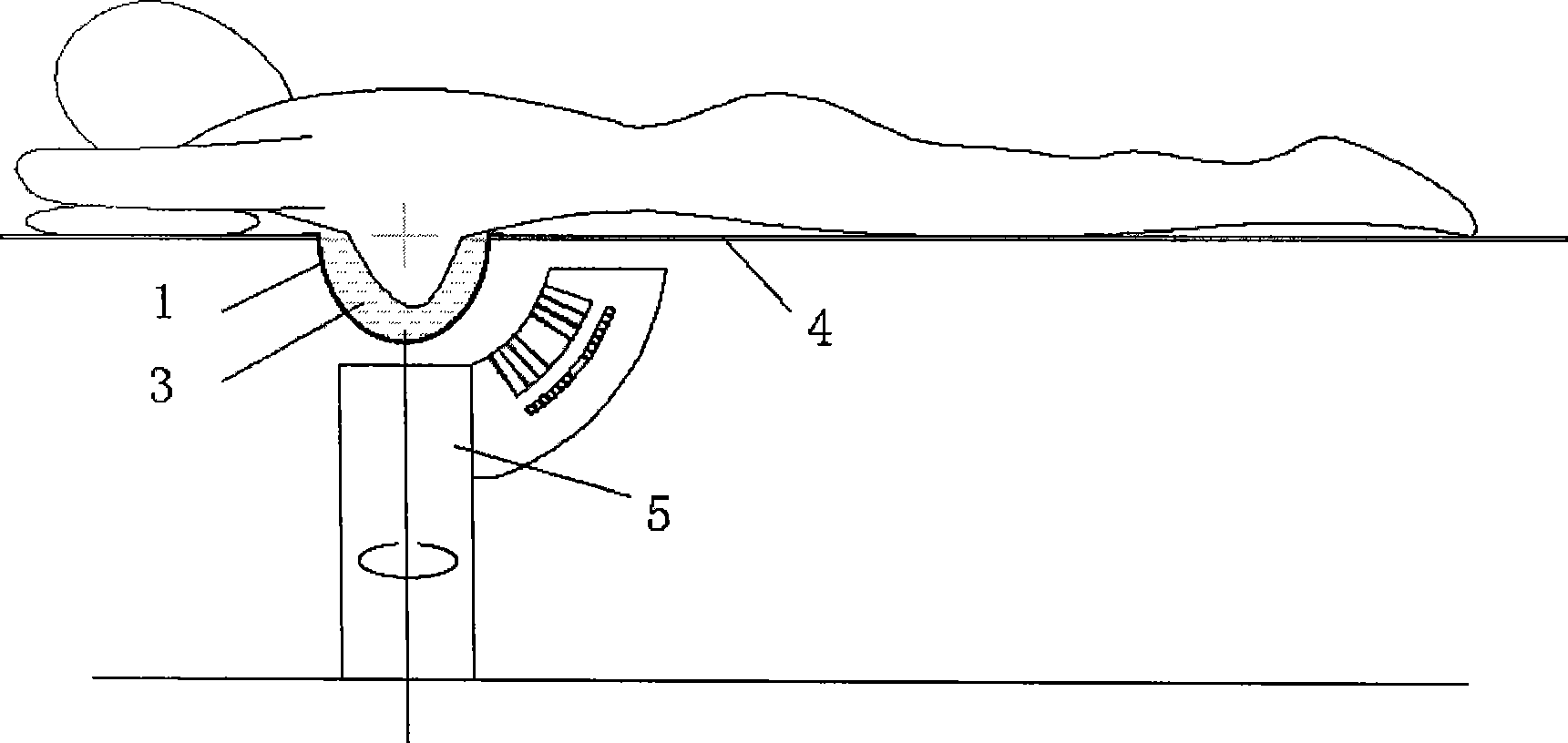Glandula mammaria positioning device
A positioning device and mammary gland technology, applied in stereotaxic surgical instruments, medical science, radiotherapy, etc., can solve the problems of poor repeat positioning accuracy, immobility, and inability to know repeat positioning errors, etc., and achieve the effect of easy calculation
- Summary
- Abstract
- Description
- Claims
- Application Information
AI Technical Summary
Problems solved by technology
Method used
Image
Examples
Embodiment 1
[0014] Such as figure 1 As shown, first on the treatment bed base plate 4, a hole whose shape and size match the outer contour of the upper part of the cover 1 is opened, and a shape-fixed cover 1 is embedded in the hole, such as a cover 1 made of plexiglass. Before starting the treatment, an appropriate amount of tissue equivalent liquid such as water 3 is injected into the cover 1 . The patient is then placed prone on the treatment couch floor 4 with her breasts placed in said hood. A 3D ultrasound probe 2 with a known position is detachably connected under the cover 1, and the 3D ultrasound probe 2 is used to scan the breast, obtain an anatomical image of the breast, and then calculate the coordinate position of the lesion. Since the patient is on the treatment bed floor 4 of the treatment machine at this time, the converted lesion coordinates are the positions where the rays should be irradiated, thereby completely avoiding setup errors. At the same time, since the shape...
Embodiment 2
[0016] One of the differences between this embodiment and Embodiment 1 is that the imaging device uses a conventional ultrasonic probe installed on a driving device with a three-dimensional model reconstruction software module instead of the 3D ultrasonic probe. Specifically, the driving device with the three-dimensional model reconstruction software module is a mechanical device that can drive the probe to rotate or swing to scan, and it scans the breast through the drive of the automatic control system to obtain a series of ultrasound images with known orientations, and then through Computer software reconstructs the three-dimensional model of the breast to determine the coordinates of the lesion location. Another difference between it and Embodiment 1 is: there is also anti-slip material (not shown in the figure) around the opening to prevent the lesion from shifting due to sliding when the patient lies prone on the treatment bed.
[0017] The cover 1 of the present inventi...
PUM
 Login to View More
Login to View More Abstract
Description
Claims
Application Information
 Login to View More
Login to View More - R&D
- Intellectual Property
- Life Sciences
- Materials
- Tech Scout
- Unparalleled Data Quality
- Higher Quality Content
- 60% Fewer Hallucinations
Browse by: Latest US Patents, China's latest patents, Technical Efficacy Thesaurus, Application Domain, Technology Topic, Popular Technical Reports.
© 2025 PatSnap. All rights reserved.Legal|Privacy policy|Modern Slavery Act Transparency Statement|Sitemap|About US| Contact US: help@patsnap.com


